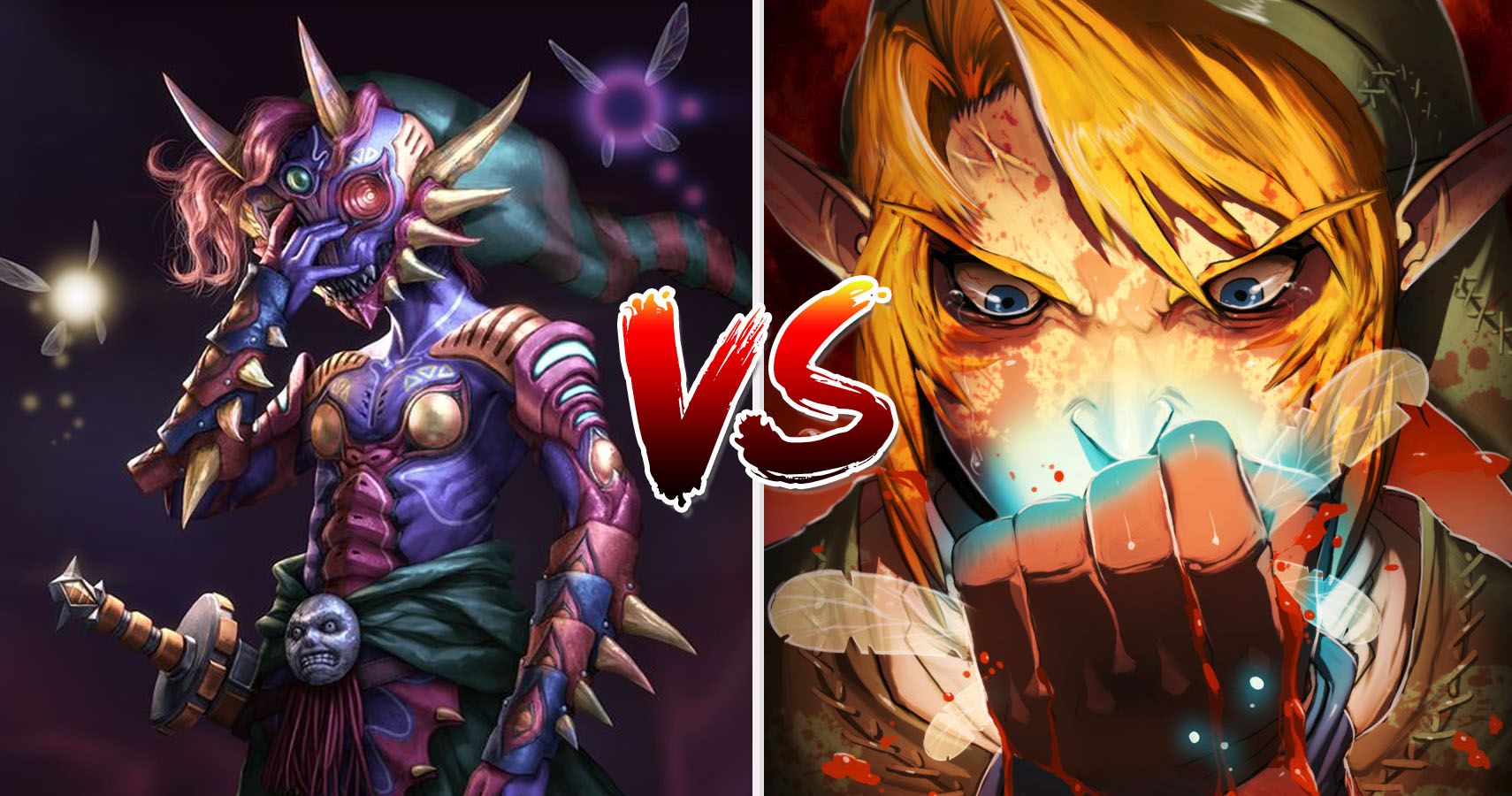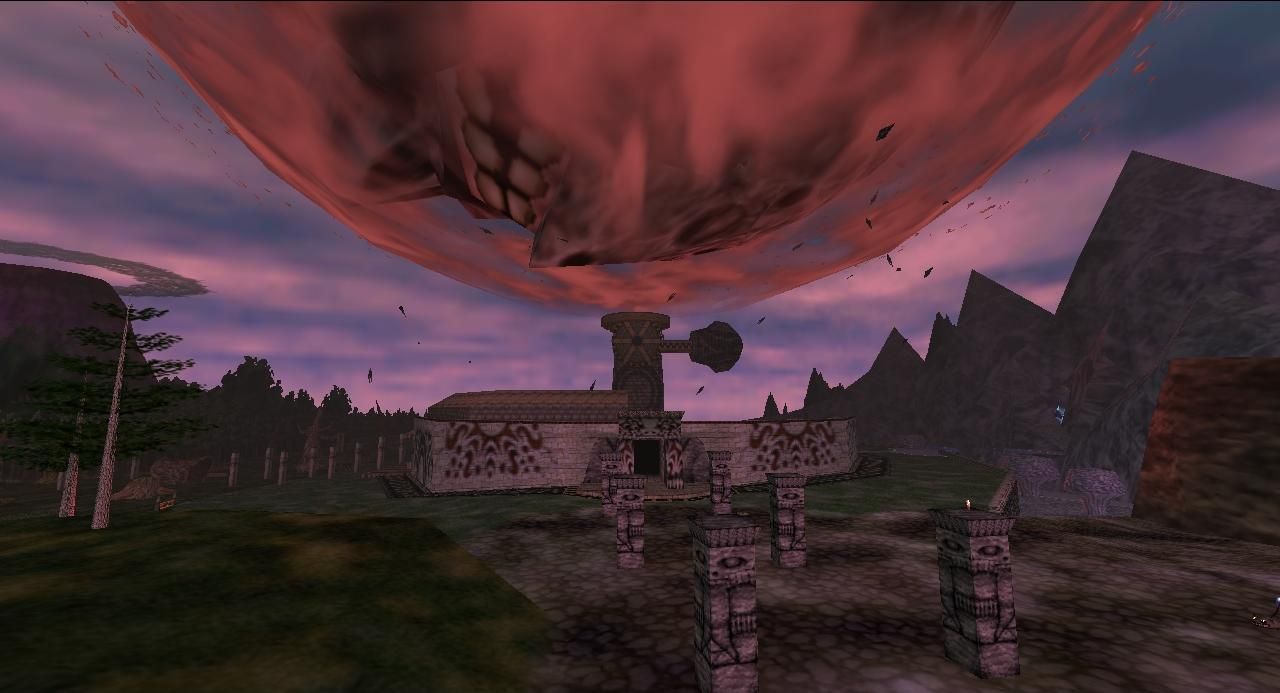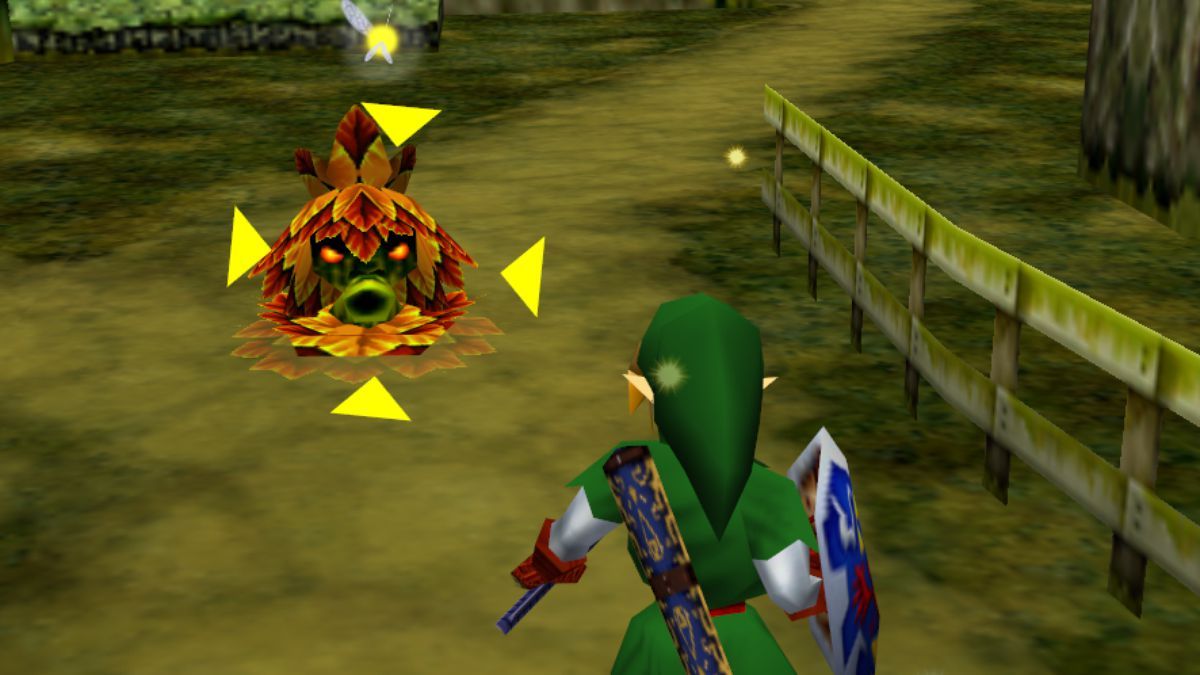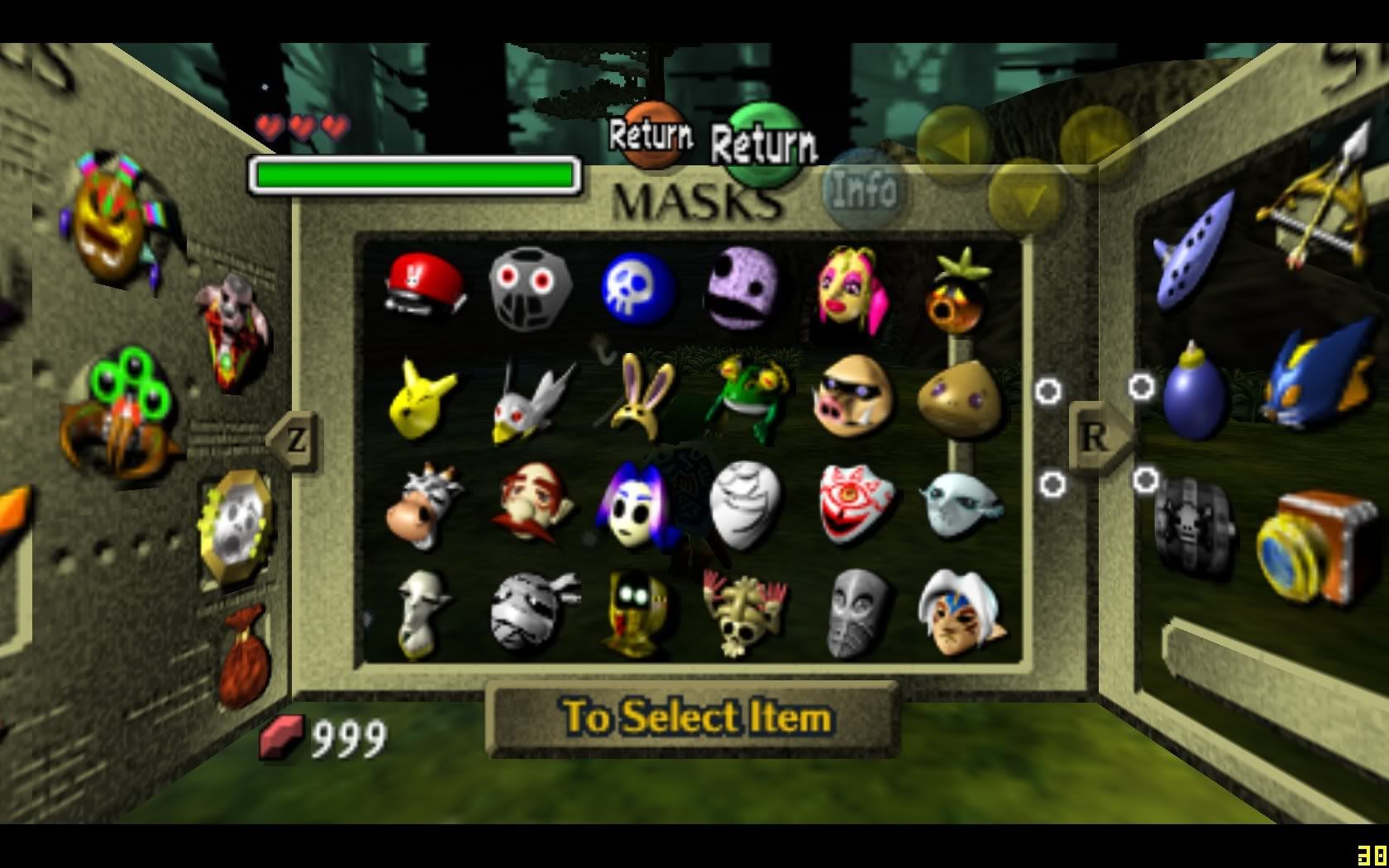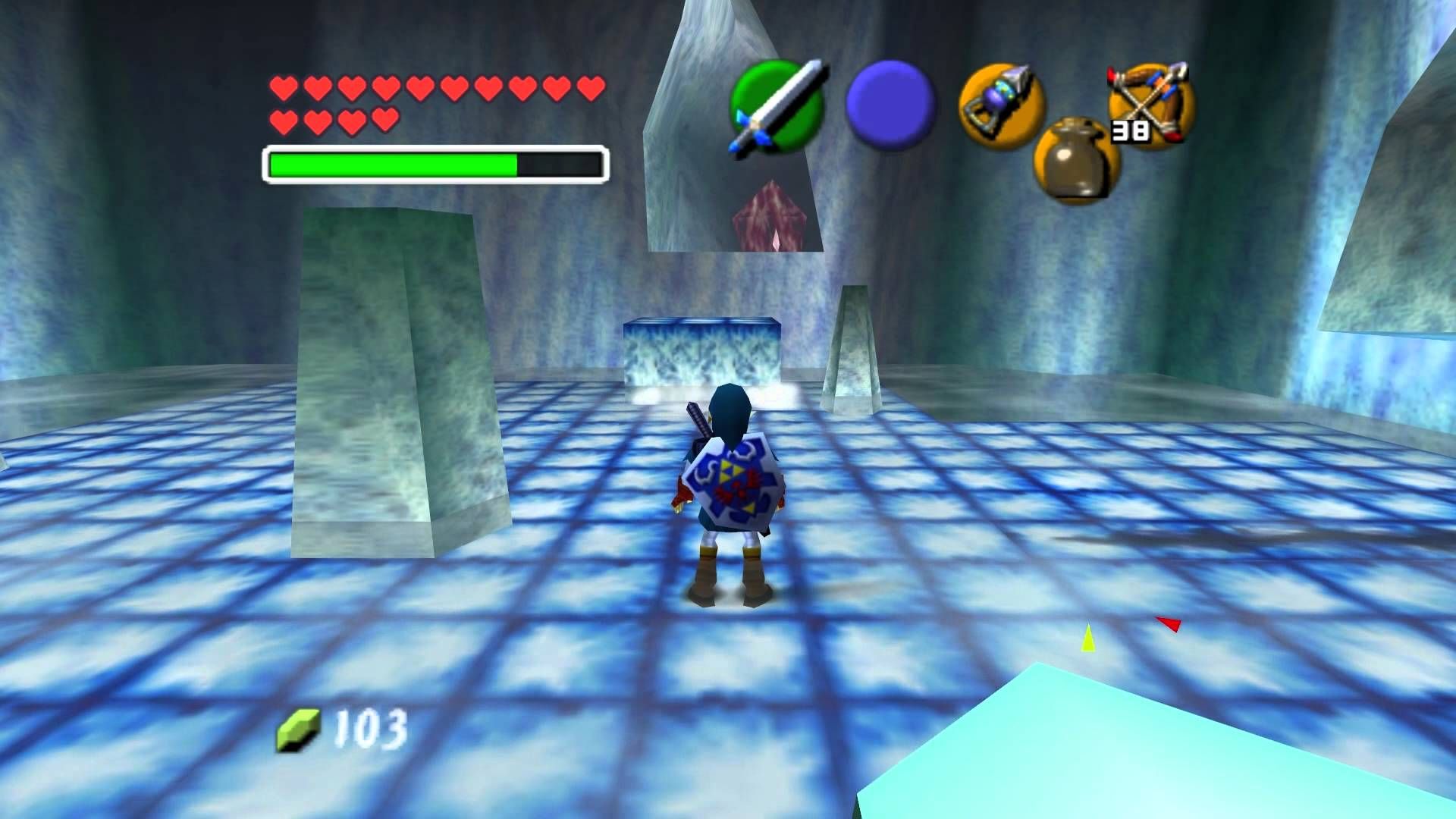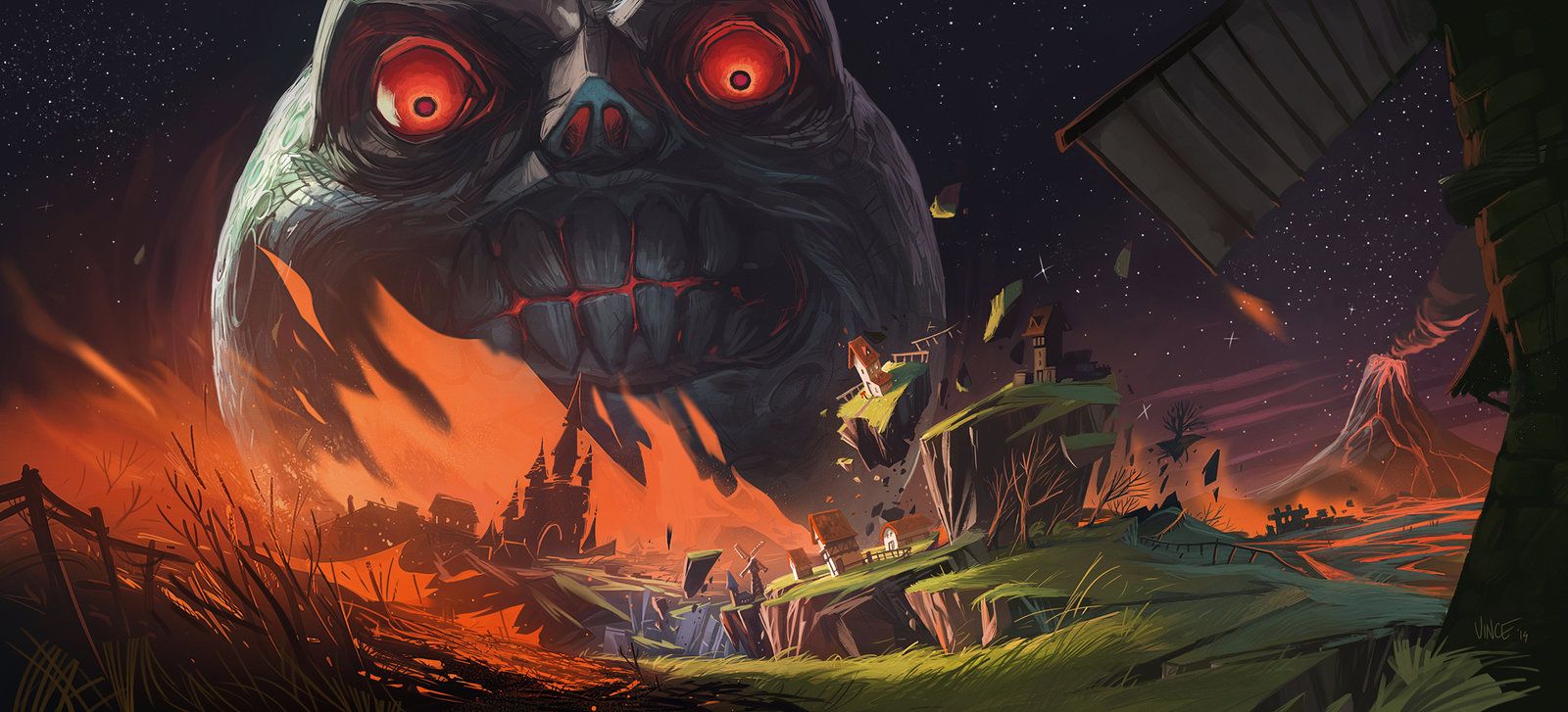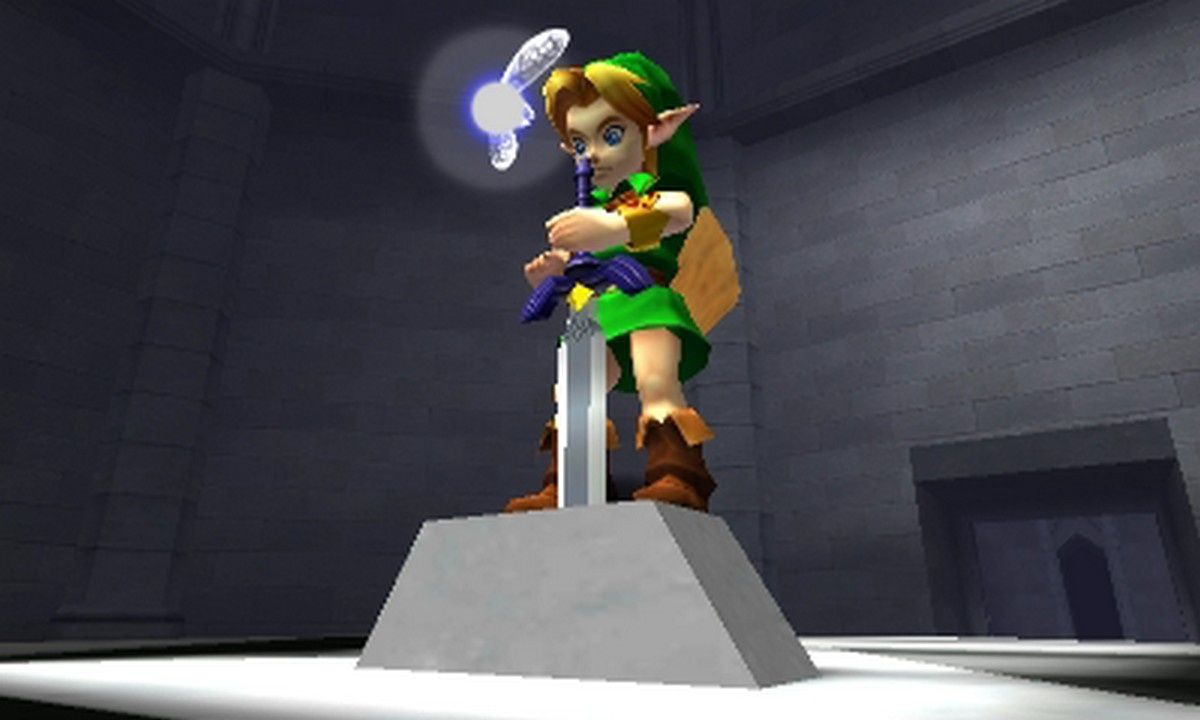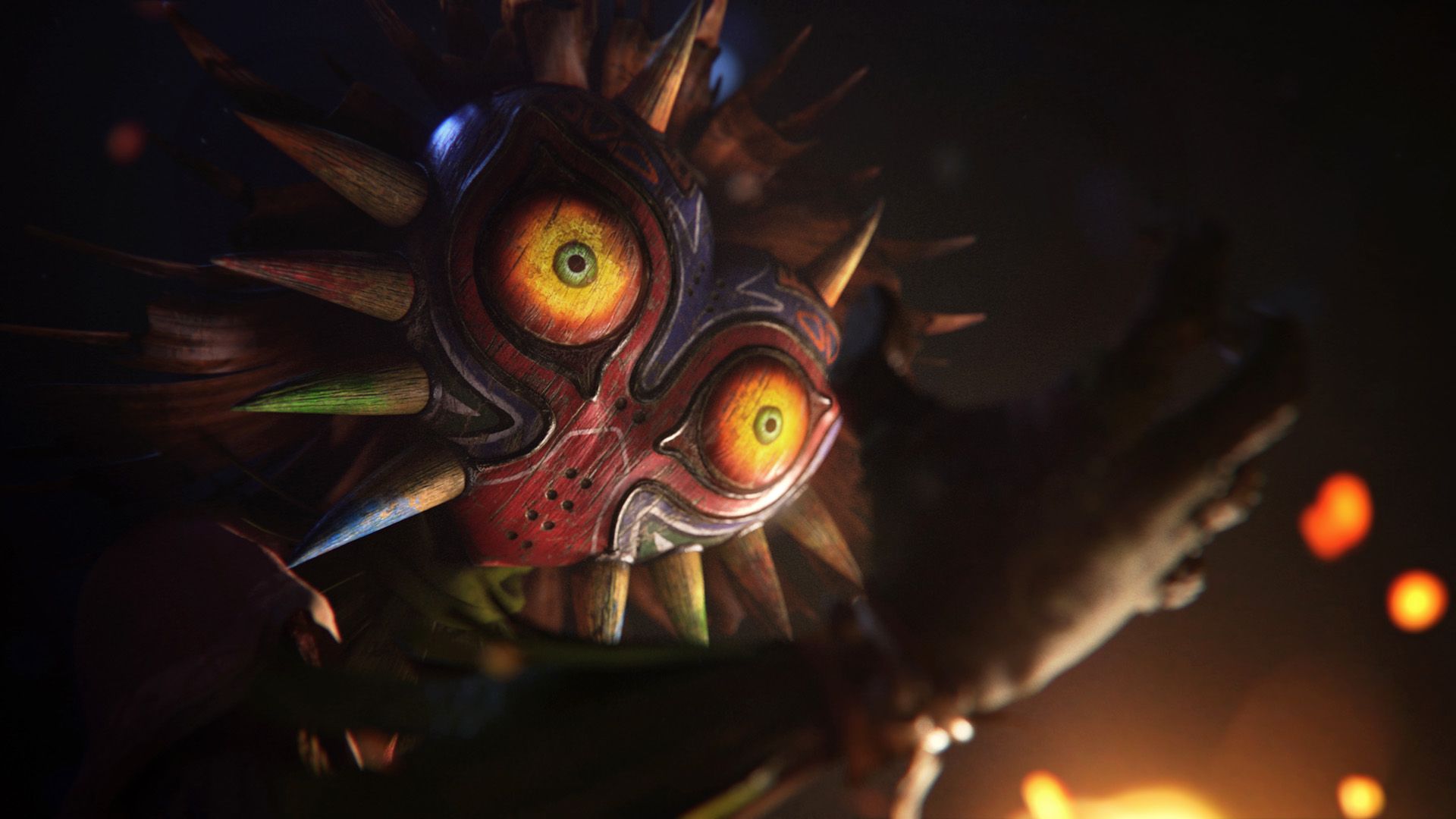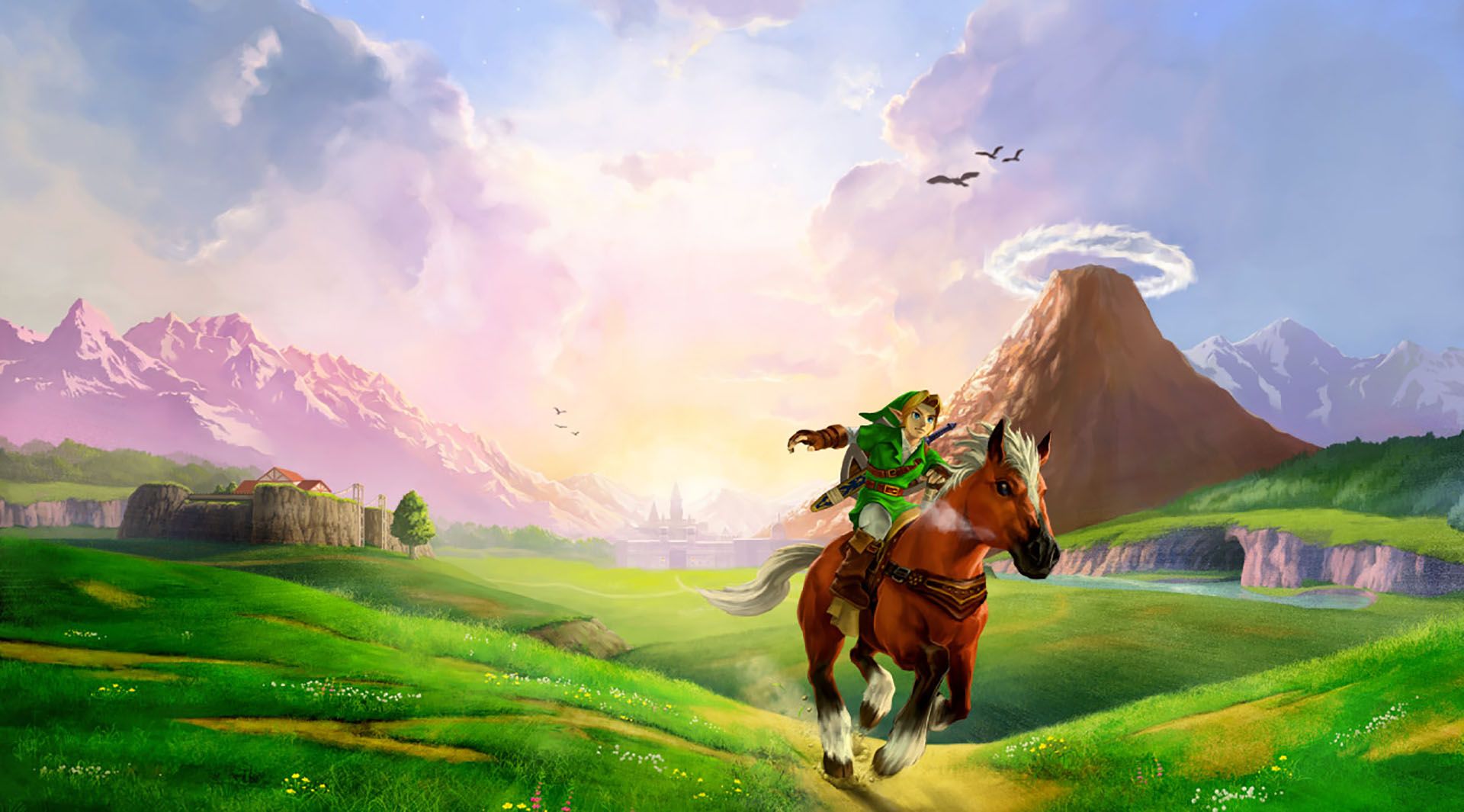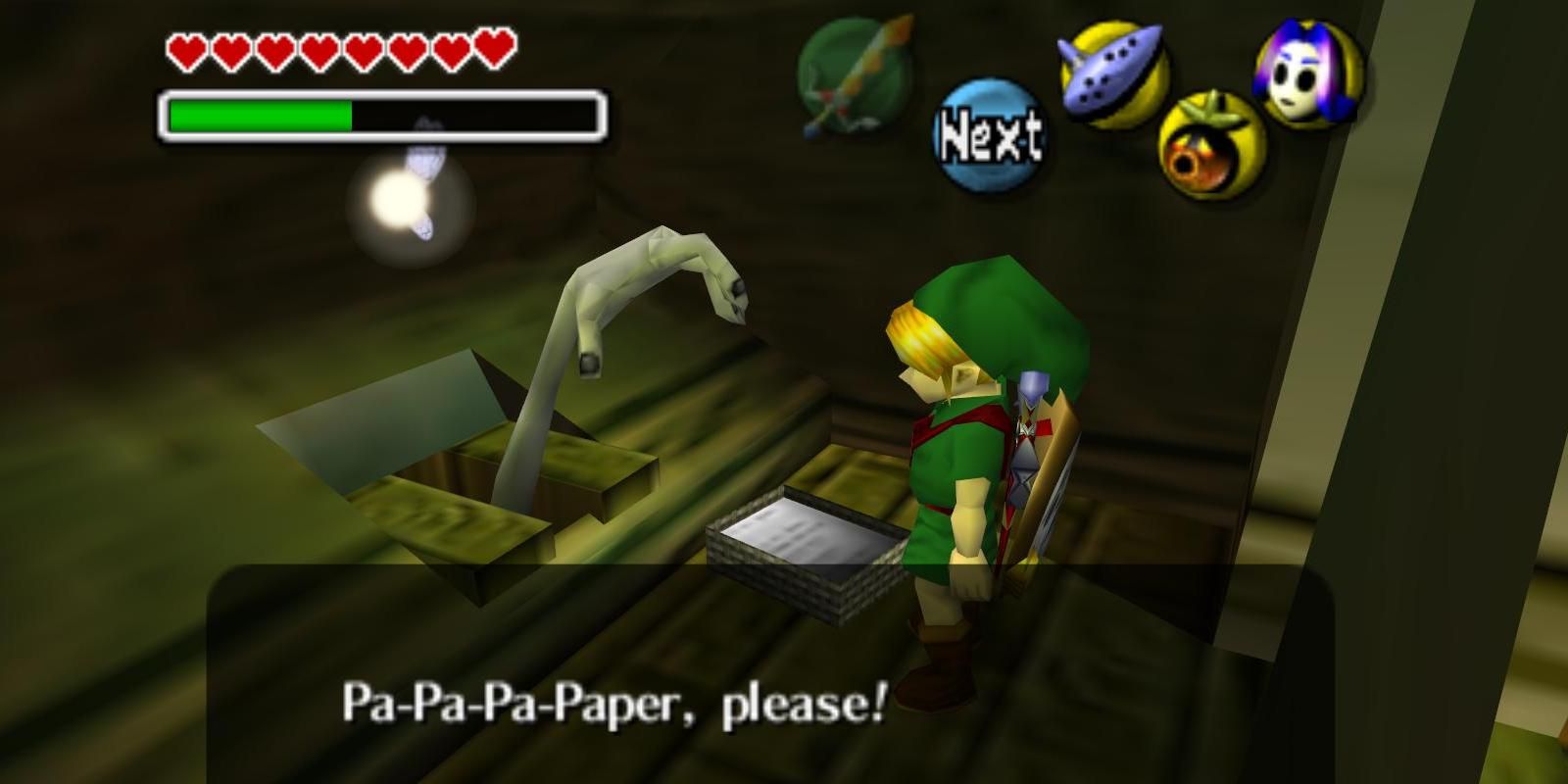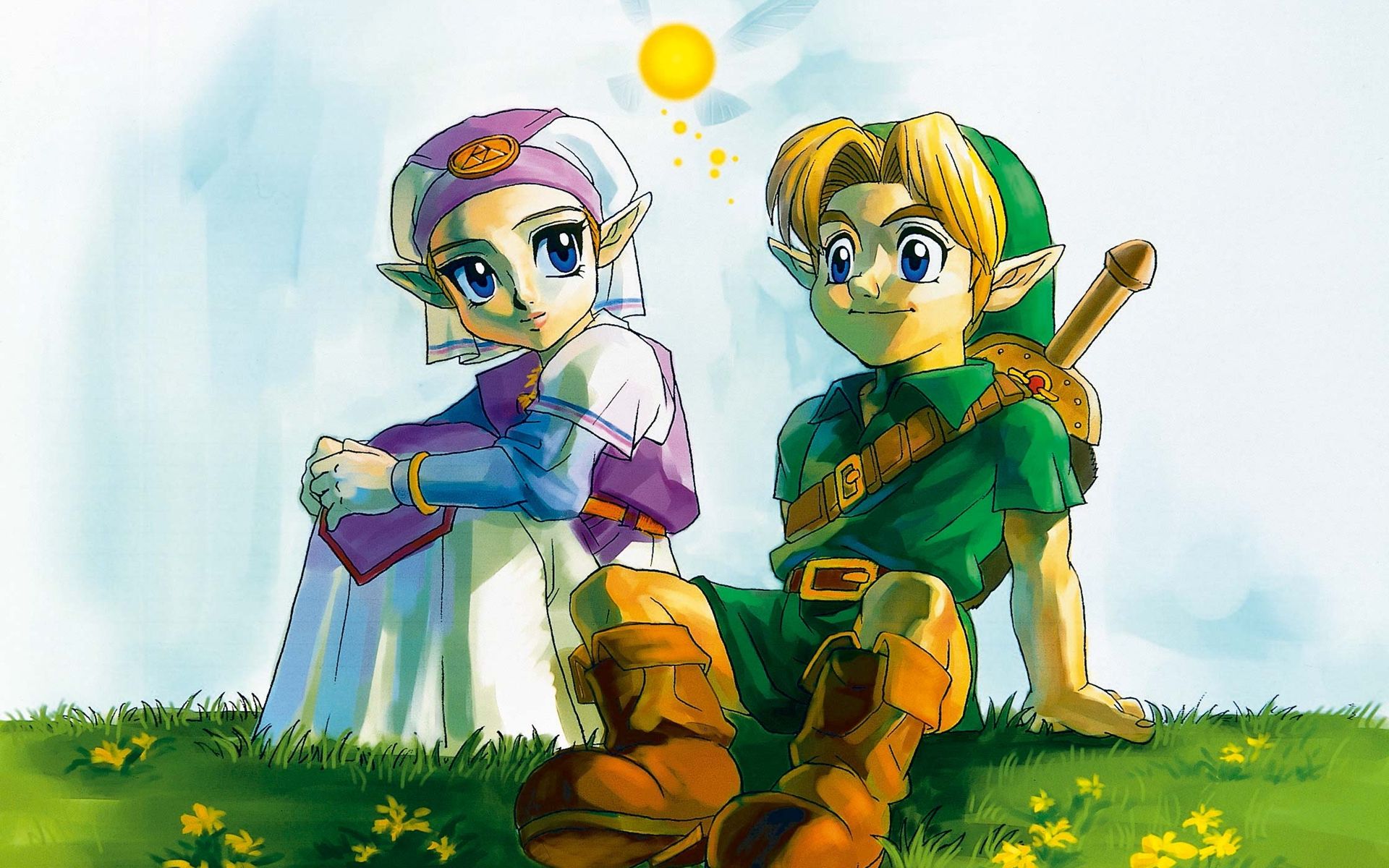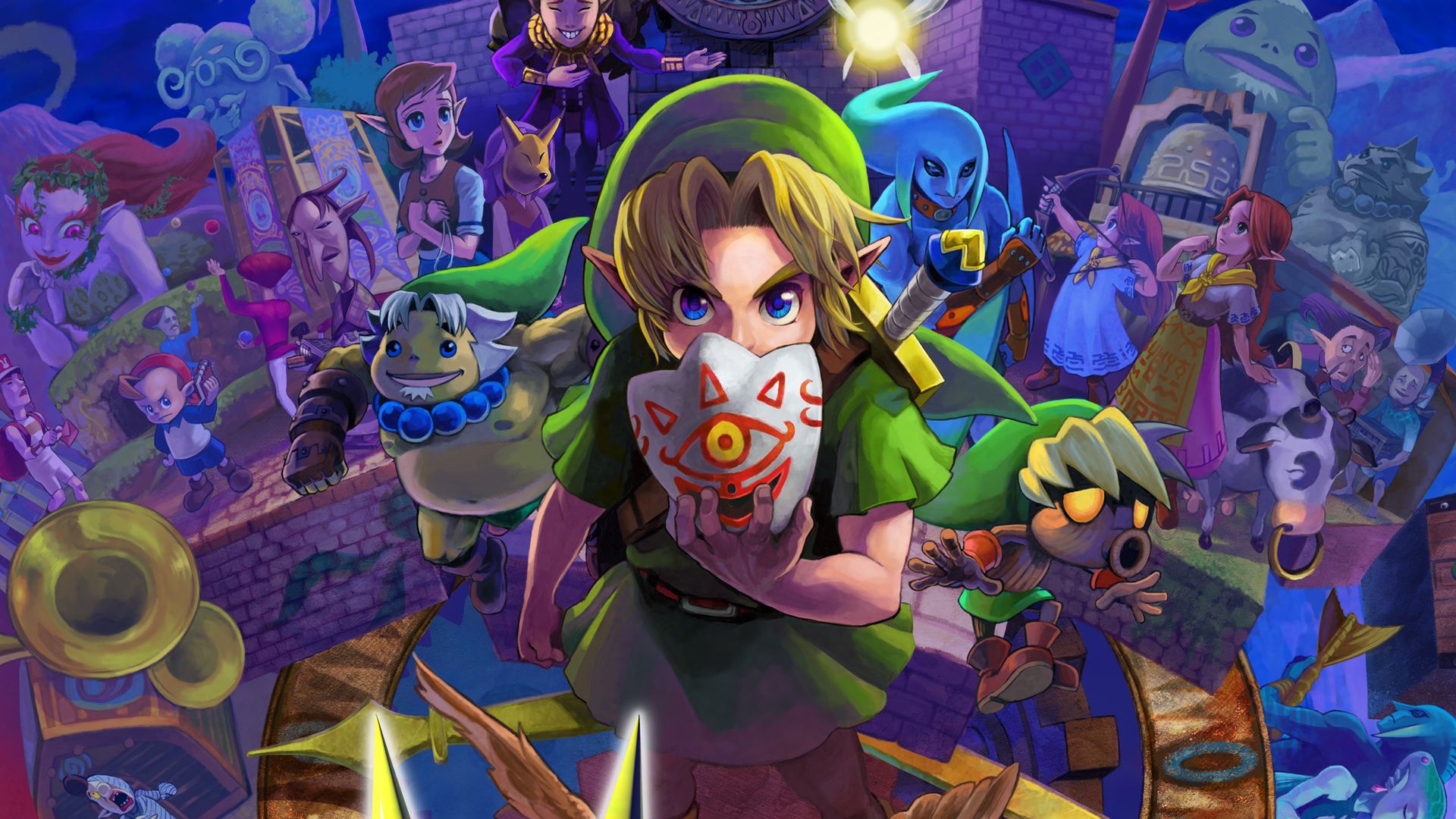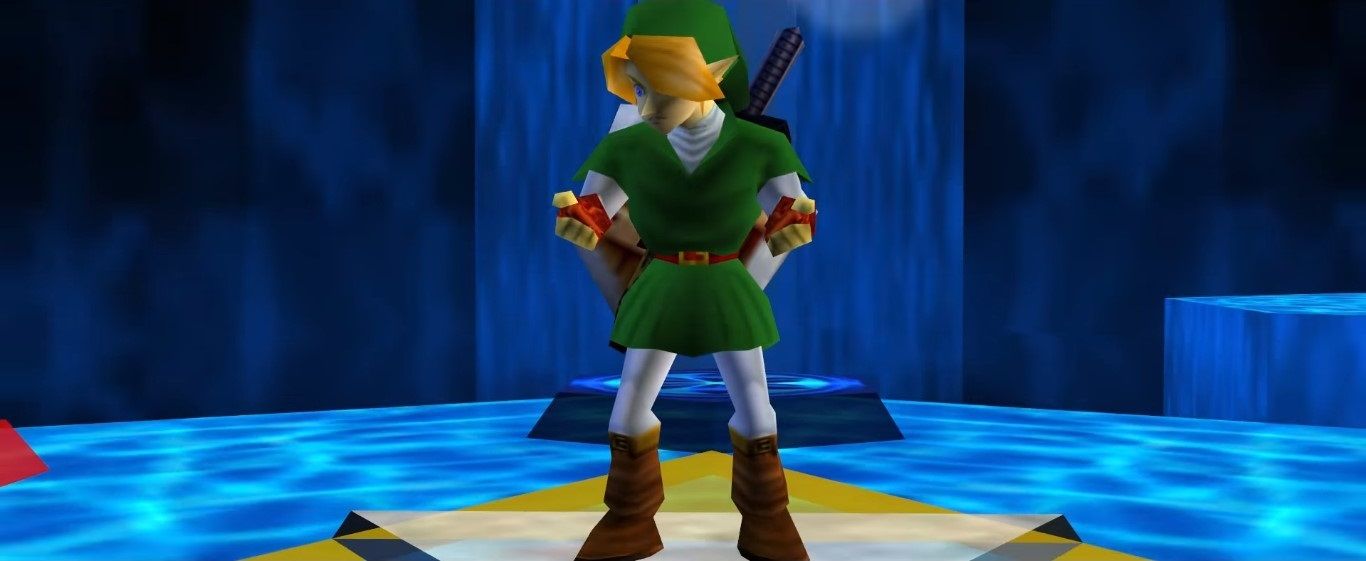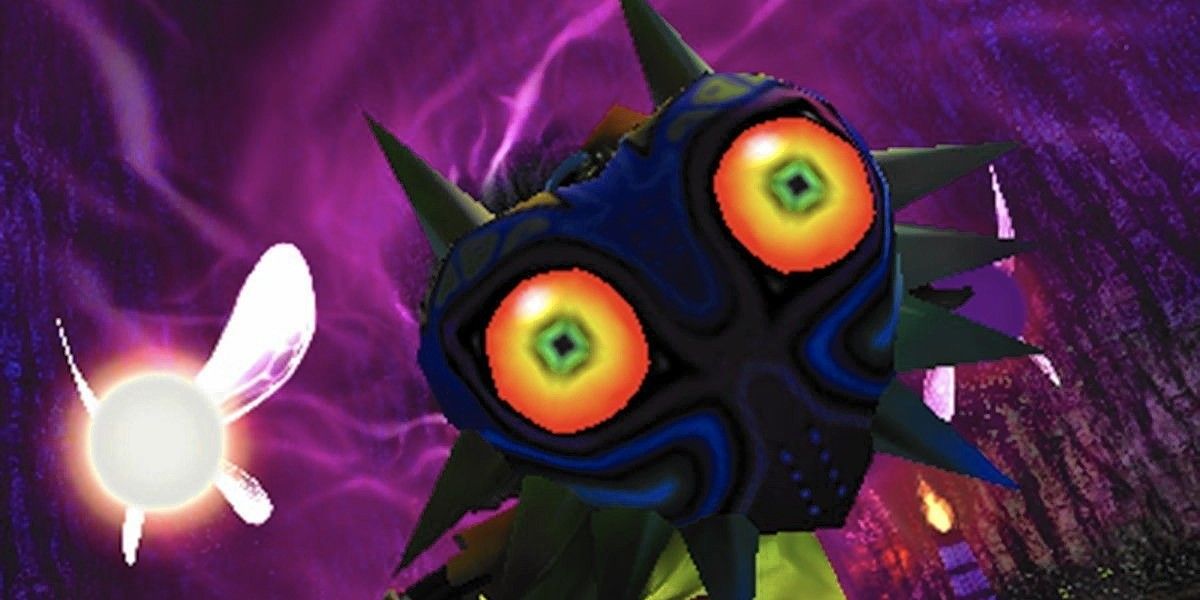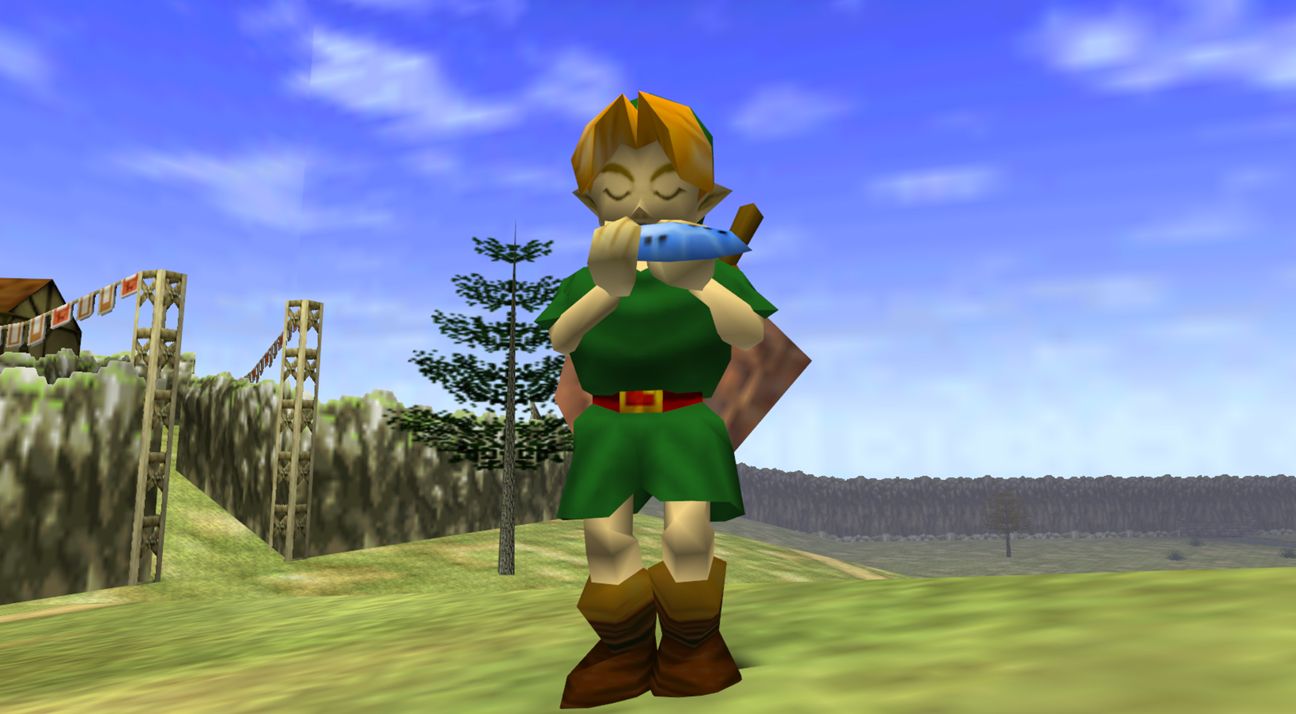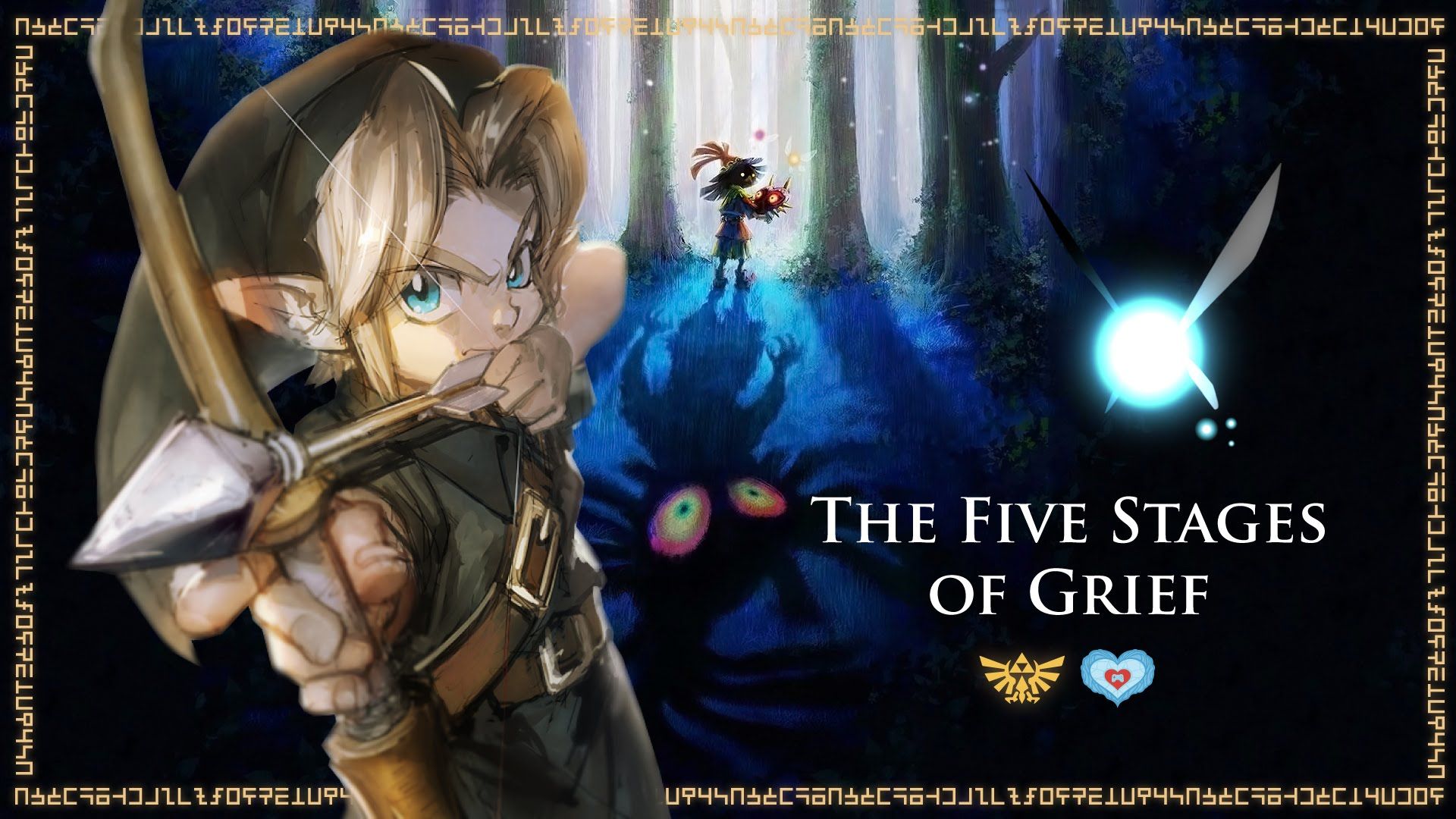Which Legend of Zelda game is truly the best? In a series as celebrated as Zelda, it's a tough question to answer.
A Link to the Past always gets some votes, as does The Wind Waker. But no Zelda debate is more spirited than the one about the franchise's two celebrated Nintendo 64 entries.
So which is better, Ocarina of Time or Majora's Mask? Obviously there's no one right answer. Like any such question, it's subjective. It's also possible to enjoy the games equally. They share a lot of similarities, after all.
But just for fun, let's break it down and see which of these games truly has the edge. Both games have a number of legitimate claims to the title of "Best Zelda Game". Ocarina revolutionized 3D gameplay with its Z-targeting system while ushering the already celebrated Zelda series into a new era with its epic scope (for the time, anyway). With Majora's Mask, on the other hand, Nintendo had the courage to take a lot of what made Ocarina so great and throw it out in favor of entirely different but equally captivating elements (the infamous three-day structure, a much darker story).
It's as close a contest as you are ever likely to see, but if one game has to win, this is our conclusion. Here are 8 Reasons Majora's Mask is Better Than Ocarina of Time (and 7 it's Not).
15 Majora's Mask: Unique Structure
The vast majority of video games have a linear structure, just as most stories do. There's a beginning, a middle, and an end, and the gamer (and his avatar) travel on a straight line down that path.
Majora's Mask says "nuts to that" and instead forces the gamer to relive three separate days that repeat over and over until Link finally has the tools he needs to stop the cycle and save the land of Termina.
It's a seemingly complex and potentially intimidating system, but it's implemented masterfully. Key items, Ocarina songs and money are retained throughout Link's travels through time. That's critical, because there simply isn't enough time to save Termina in any one three day span. The unique structure also lends itself to the feeling of existential dread that comes from being the one person caught in a time loop who is actually aware of it.
14 Ocarina Of Time: Gameplay Revolution
Both Ocarina of Time and Majora's Mask feature practically flawless gameplay, but full credit for that has to go to the former game. Super Mario 64 ushered Nintendo (and gaming at large) into the world of 3D, but Ocarina is the game that truly revolutionized this new style of gameplay. The influence of Ocarina's Z-targeting system cannot be understated, as allowing the gamer to focus on, attack and strafe around one enemy on a 3D plane was unheard of at the time.
The camera that followed Ocarina's action was also terrific, with only the slightest of occasional hiccups. The game also built on Mario 64's use of the analog stick, allowing Link to tiptoe through a dungeon one moment and aim an arrow with precision the next.
Majora's Mask kept all of Ocarina's gameplay mechanics, which was the absolute right choice: if it ain't broke, don't fix it!
13 Majora's Mask: Fun With Masks
Ocarina of Time didn't have much in the way of side quests, but it did include a fun little diversion in the form of masks. As Child Link, players could visit the Happy Mask Salesman in Hyrule Castle Town and borrow masks to wear and trade. It was interesting to run around and see different characters react to the different masks, and it introduced the wonderfully creepy Happy Mask Salesman who would play a much bigger role in Majora's Mask.
It's probably only natural that masks would play a much bigger role in a game called Majora's Mask. Not only could Link find even more masks, but this time they also had gameplay applications. For example, the Bunny Hood allows Link to run a lot faster, while the Stone Mask makes Link invisible to most enemies.
Most notable, of course, are the masks that transform Link into a Deku Scrub, a Goron and a Zora, as well as the incredibly powerful Fierce Deity Mask.
12 Ocarina Of Time: Better Dungeons
Zelda games are known for a lot of things, but perhaps most of all for their dungeons. Most games in the series feature a number of enclosed areas ("dungeons") where the gamer must solve puzzles and find new items in order to progress. More recently, Skyward Sword and Breath of the Wild have both experimented with the standard Zelda formula, but Ocarina and Mask reveled in it.
For gamers who love a good dungeon, Ocarina is the clear winner. The 1998 release featured a whopping nine dungeons, including the Forest Temple with its unforgettable music and haunting atmosphere, and the famously frustrating Water Temple with its cursed Iron Boots and Dark Link himself. It also has three mini-dungeons.
Majora's Mask paled in comparison with just four main dungeons, the best of which is probably the topsy-turvy Stone Tower Temple.
11 Majora's Mask: Sense Of Urgency
A lot of games cast you as the one and only hero who can save the world. Most games, however, are unable to provide the sense of urgency that a scenario like that would realistically have. Consider Ocarina of Time, especially once Link has been cast forward into Hyrule's dark future. Ganondorf rules the land, and it's up to you to stop it... but sure, go ahead and spend time at the fishing hole, or scouring the land for every last Heart Piece.
In Majora's Mask, the gamer is constantly reminded of their incredible responsibility by that unforgettable sneering moon that falls ever closer to the ground. Even if you do decide to run around Termina Field for a while with no set goal, you can't escape the constant tick of the clock as impending doom draws ever nearer.
10 Ocarina Of Time: Classic Story
An unlikely hero rises from obscurity to fulfill an incredible destiny and save the world... okay, you've heard it before. In fact, it's one of the most common storytelling tropes there is. But there's a reason for that: it works!
Ocarina of Time is just such a classic story. Sure, there are no surprises, no unexpected turns off the beaten path. From the moment you begin your adventure as Link (or whatever you choose to call him), there is no doubt that you will eventually save the land of Hyrule. There will be hardships, and it will take time and determination, but good will overcome evil. It's just how these stories work!
Predictability isn't always a bad thing, though. Link's Ocarina adventure is a classic hero's journey filled with incredible challenges, moments of sheer joy and profound sadness, and an astute gamer will see them all coming. But that doesn't take away from the story's impact at all.
9 Majora's Mask: Darker Story
If Ocarina of Time is as classic a story as you're likely to find, Majora's Mask is the complete opposite. From the moment it begins with Link exploring the foreboding Lost Woods before falling down a seemingly endless pit into the land of Termina, it's obvious that this is no normal Zelda game.
The story of Majora's Mask is decidedly darker than that of its predecessor. In the land of Termina, Link meets a procession of characters who are consumed by sadness, grief and regret. The impending doom unleashed by the falling moon only heightens these feelings of dread.
Then there's the bad guy. Unlike Ocarina's villainous Ganondorf, Majora's Skull Kid is a lonely and lost soul who is twisted and enslaved by a malevolent force. His plight makes him sympathetic, which is something Ganon could never be accused of being.
8 Ocarina Of Time: Epic Scale
Modern gamers raised on a diet of Skyrim, Fallout and Mass Effect may scoff at the idea, but in 1998, Ocarina of Time was a gigantic game. Few gamers will ever forget the first time they left the Kokiri Forest and saw the sprawling scope of Hyrule Field laid out before them. Nowadays a lot of games invite you to go anywhere and do anything, but Ocarina was one of the first to do so, and it was mind-blowing.
Sure, the game (and that annoying owl) nudged you down the road to Hyrule Field, but that was only one of your choices. You might also decide to investigate Lon Lon Ranch, or go as far as you could into the desert before being turned away by dangerous Gerudo thieves. Maybe you went for a dip in Lake Hylia, or scaled Death Mountain. It was all up to you.
7 Majora's Mask: Full Of Side Quests
As big as Ocarina's world was, however, it received some criticism for being relatively empty. There were a few side quests, like finding homes for all of the Happy Masks Salesman's offerings, or reuniting Malon with her father Talon. But for the most part gamers had to either follow the main story or make their own fun within the game's vast world.
Majora's Mask, while not quite matching Ocarina's epic scope, fills its world to the brim with people to meet and things to do for them. Link fills the ingenious Bomber's Notebook with information about the people of Termina and the favors they've asked of him, from sharing the latest dance craze to, ah, providing paper to someone in dire need of it.
You're also charged with more emotional tasks, like reuniting lovers and helping a Zora mother find her lost eggs.
6 Ocarina Of Time: Classic Zelda
Zelda fans have been conditioned to expect certain things out of a new game in the series. Link, of course: that goes without saying. Princess Zelda has to be there. And as for the bad guy, who else can it be but Ganon? Then there's the land of Hyrule, which is practically a character itself.
Ocarina of Time is about as classic Zelda as you can get, with its youthful hero and his epic quest to save Hyrule. The game is chock full of references to earlier (or later, timeline-wise) entries in the series, like Lake Hylia, Death Mountain and Kakariko Village.
Majora's Mask introduces a completely new world to explore, filled with new (albeit familiar) characters, and it's awesome. But Ocarina is undeniably the more traditional Zelda experience.
5 Majora's Mask: Unforgettable Cast
With a few exceptions (Malon, Ruto, Saria, etc.), Link never really gets to know the people of Hyrule in Ocarina of Time. But Majora's Mask is determined to make you care about the characters that inhabit its world. From the moment Link steps foot in Termina's Clock Town, people are telling him their life stories and begging for his aid.
Ranch owner Cremia and her little sister Romani are dealing with bandit raids and even an alien invasion. Anju the hotel clerk is nursing a broken heart and searching for her lost love Kafei. And who could forget Tingle and his fervent desire to become a fairy (I know some people would like to...).
The Skull Kid makes for a sympathetic and misled villain, while the Happy Mask Salesman is creepy and mysterious, and probably not what he appears to be. Then there's those Moon children...
4 Ocarina Of Time: All Grown Up
A few Zelda games have featured dual worlds, dating back to A Link to the Past and its unforgettable mix of Light and Dark Worlds. Ocarina's take on that format is to split the story into two time periods separated by seven years. You start the game as Child Link in a relatively peaceful world, but seven years of magically induced sleep later, everything has changed.
As Adult (or teenage, I guess) Link, you get better weapons (so long slingshot, hello bow!) but more importantly the story heads into darker and more mature territory. You're faced with a world overrun by Ganondorf, filled with monsters and displaced Hylians. Sure, it's not violent and bloody like Skyrim, but for the Zelda series it's a definite change in tone.
3 Majora's Mask: Navi Who?
“Hey, listen!” Anyone who has played Ocarina of Time will forever be haunted by those words, said again (and again and again and again) by Navi, Link’s fairy companion.
Majora’s Mask mercifully drops Navi in favor of a new fairy companion, Tatl, who is far more interesting. Tatl and her brother Tael are companions of Skull Kid until the influence of Majora’s Mask changes him. When she is separated from her brother and Skull Kid, she is forced to team up with Link to find them again, but she is not happy about the arrangement.
Unlike Navi, who is pleasant to Link right from the start, Navi has little respect for him and blames him for her predicament. As their adventure continues, however, she comes to like her new companion and works in concert with him to stop Skull Kid from destroying the world.
2 Ocarina Of Time: Best Game Ever?
There's no doubt that Ocarina of Time is on the shortlist for best video game of all time. It revolutionized 3D gameplay, breathed new life into what was already seen as one of gaming's greatest franchises, and set the stage for future masterpieces like The Wind Waker, Twilight Princess and Breath of the Wild (and Majora's Mask, of course).
Mask lives in Ocarina's shadow, which was inevitable given the relationship between the two games: it's a direct sequel and reuses most of Ocarina's assets, from gameplay systems to character models. As great as Majora's Mask is (and it's pretty great) there's simply no denying that it stands on the shoulders of Ocarina's accomplishments.
But again, those accomplished literally changed gaming. As gamers, we're lucky Nintendo decided to build on them with Majora's Mask.
1 Majora's Mask: Deeper Meaning
Majora's Mask is a complex story, but ultimately it's about Link saving a strange new world before returning to his own. Or is it?
A popular fan theory posits something entirely different. Many fans believe that the events of Majora's Mask aren't real, but instead represent Link's journey through a purgatory realm as he comes to accept his own death.
Like all great theories, the more you think about it, the more sense it makes. After all, Link falls through a hole in the Earth, but somehow lands safe and sound in Termina, which is where exactly? And why are all of its people perfect replicas of Hylians Link met in Ocarina of Time?
What's more, characters in the game all exhibit behaviors consistent with the accepted five stages of grief: denial, anger, bargaining, depression and acceptance.
Even the name Termina fits: it's pretty close to "terminal", as in the end!
Whether you subscribe to this theory is up to you, but it certainly has merit.
Those are 8 Reasons Majora's Mask is Better Than Ocarina of Time (and 7 it's Not). What do you think?

